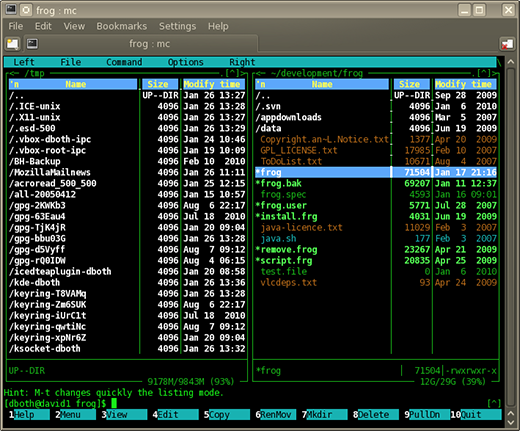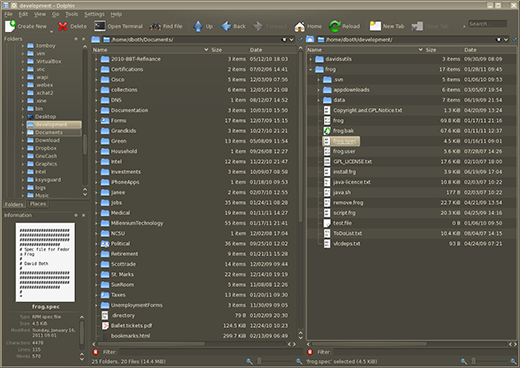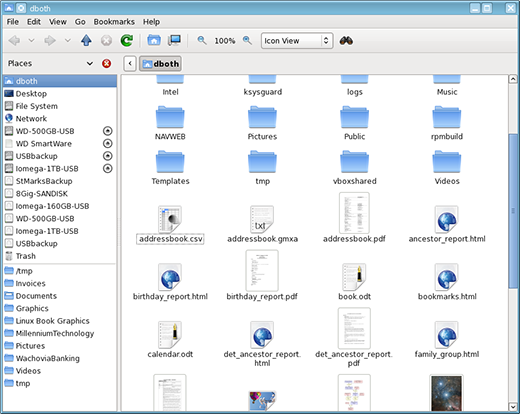company records is growing to be 35-50% 12 months-over-12 months. Unsurprisingly, many companies are finding their storage spend doubling. lots of this spend is on storage, which is regularly rising as a percent of computing infrastructure. In 2009, storage accounted for roughly 20% of the fully populated infrastructure. In 2015, that percent has doubled – and it keeps on rising.
Managing all this storage is a selected problem with unstructured statistics, which makes up seventy five% and better of most kept statistics. Why is the percentage so excessive? trust fast-growing workplace information, e-mail, SharePoint, videos, pics, audio, cloud information, sensor facts – a quick-starting to be universe of hard-to-manipulate counsel.
So what's the difficulty?
lively information is comparatively seen and manageable on construction methods but the longer statistics ages, the less seen it turns into to clients and methods. We name these info "dark facts." dark information is unstructured facts whose traits or existence are nearly invisible to IT.
This records is unfold across assorted storage repositories: networks, trade, SharePoint, field, the cloud. it is elaborate to grasp that it even exists devoid of deliberately searching metadata across diverse storage systems. Even when searchers discover it, it's tricky to grasp its priority and entry settings. At most desirable dark data without problems takes up effective storage space; at worst it influences protection, retention guidelines, and business price – exactly what it's accountable for shielding.
increased expenditure is one unpleasant consequence. CapEx and OpEx scale up sharply with swelling storage. nowadays's storage fees encompass buying and managing storage for file shares, exchange, and SharePoint, all of which could be on-web page or distributed throughout remote locations. companies also buy services like third-celebration file sharing, purposes delivered remotely, and cloud-based mostly storage – or they let their employees do it with company information. All of this adds to the can charge and complexity of storing information.
speedy-becoming statistics additionally provides degrees of complexity to unstructured records administration. IT has facts flowing in from sensors, consumer-generated content, communications, exploration, and media. The sheer quantity of data unfold throughout many storage places makes it complicated to even find the information you're looking for, not to mention manipulate it or aggregate it to serve business procedures like analysis and eDiscovery. IT isn't capable of visualize and act upon widely disbursed data throughout a variety of storage systems and purposes.
bad management additionally impacts information-pushed company processes like eDiscovery and compliance. IT spends more time making an attempt to find assistance and greater cash storing it, and the rate/inadequate data administration circle simply gets greater vicious.
The creation of Hyperscale File analysis
There are how you can convey dark statistics into the gentle. here is where new, particularly scalable file analysis systems enter the picture. they can and do have eDiscovery, protection, compliance, and analytics toolsets however are primarily focused on the basic challenge of managing data for efficiency, charge-effectiveness and company value.
The basic means of these systems is to first provide the skill to discover and establish records via its qualities. The deeper the means to find information via metadata and consumer entry, the stronger. The next step is to categorise the found out statistics based on coverage, then to behave in response to that coverage. eventually all of this should be capable of working in a hyperscale storage atmosphere.
1. facts management. File analysis application automates storage management: tiers growing old statistics for huge cost discount rates, safely manages lifecycles including defensible deletion, locates and fixes orphaned information, and feeds statistics to business processes for analysis and governance. as an example, tiering older information on less expensive media frees up high priced construction storage, which increases efficiency and saves money on scaling costly production storage arrays.
2. Defensibility. loads of groups have a "delete nothing" coverage for information because no one desires to be accountable for by accident deleting a vital statistics set for the case of the century. however is responsible for high storage charges in a "delete-nothing" ambiance. Defensible deletion protects information selections and saves on the high charge of storage. The suggestions administration platform can be in a position to automate deletion with or with out approval layers. Defensible deletion also merits the criminal and Compliance departments, who don't need to fear smoking gun statistics that should still had been safely deleted.
3. facts protection. The third problem is statistics security, peculiarly consumer access handle. InfoSec groups watch the community perimeter while it's chargeable for facts security. statistics protection of direction is part of this domain and so is encryption. besides the fact that children, person entry handle is sloppy at many corporations since it's tougher to combine with big volumes of kept facts. File evaluation platforms can integrate file classification with energetic listing, and consequently experiences and remediates protection holes.
most beneficial Practices
When trying to find a file analysis platform search for these traits.
capability
explanation
benefit
eDiscovery aid
skill to search and classify file-based mostly facts is fundamental for eDiscovery collections. look for further eDiscovery tools reminiscent of legal hang and amendment monitoring, and low cost processing into the review application.
save cash and time and lower risk on collections section of eDiscovery
Defensible deletion
Defensible deletion rules will use guidelines and metadata to discover deletion candidates. should offer immediate deletions as much as diverse approval rounds. Scheduling and bulk deletion add to efficiency. Defensible tactics keep audit trails and special metrics.
store CapEx and OpEx by way of deleting and migrating data off of storage. quite simply preserve deletion decisions against opposing suggestions or investigators.
Orphaned/Stale facts
Stale information is growing old information that now not serves a company goal; orphaned data is separated from its utility and takes up storage room. each records kinds are discipline to computerized deletion and/or tiering reckoning on compliance necessities.
shop space for storing for stronger efficiency and fewer purchases.
Compliance
determine delicate files reminiscent of private health information (PHI) and guarded in my opinion identifiable information (PII) like Social protection numbers, domestic addresses, or payment advice. Launch policy-based actions accordingly.
automatically conform to safety laws.
File migration
automatically migrate facts matching certain classifications. Tier getting old information for storage discount rates, shorten records migration projects, or circulate collected facts into a protected repository.
Migrate getting older information onto less costly storage tiers for discounts and enhanced construction efficiency.
normal person eventualities
scenario #1: An commercial enterprise statistics core needs a defensible deletion device across distinct repositories.
The storage administrator team in a fancy statistics center turned into having predicament managing facts lifecycles. The criminal department did not want to save potentially smoking guns for an indefinite length of time, and storage turned into drinking a large part of the budget. youngsters, IT crucial to hold deletions defensible each for internal governance and for future litigation and compliance.
File evaluation result: They invested in a file evaluation software that allowed them to search and classify data across repositories by way of advent age, amendment date, owner, and content material. Some info could be marked for automated deletion; others for approvals before deletion. results had been extraordinary: IT discounts from SharePoint and change on my own become in the tens of lots over a 3-year duration.
situation #2: A govt company desires to keep facts to the cloud.
A 2d illustration is a government agency that made a case for storing statistics in the cloud. They additionally mandatory to cost-quite simply manage on-premise file share, SharePoint, and exchange and favorite to manipulate all their unstructured statistics with the same platform. They favored the scalability of the cloud however security turned into a huge subject, particularly considering the fact that their company overseers have been not satisfied in regards to the integrity of data on the cloud.
File evaluation outcomes: The company purchased a file management platform with strong governance capabilities to show information safety. The platform enabled the agency to defensibly audit access rights and facts ownership across all repositories including the cloud, and allow them to observe prosperous classifications for defensible migration and deletion. The identical platform additionally reported consumer entry rights and remediated complications in accordance with IT guidelines.
start systems
There are two primary product methods to this scale of file evaluation: storage-primarily based, information-aware programs, and massively scalable utility-based intelligence working across distinctive programs.
Storage-based mostly information focus
This choice bases facts intelligence within the storage management layer. Storage carriers have added management elements to its arrays for many years and a few of them are fairly subtle. lots of the big storage stalwarts work alongside these strains including EMC's SourceOne division, IBM InfoSphere and StoredIQ, and HP's clever Retention and content material management platform.
more recent hyperscaled storage products mix CPU advances and flash with records cognizance for analytics. Classification and analytics returns tips on the files kept on the equipment together with file attributes, patterns and searches. Analytics can be used for business cost, to troubleshoot problems, or to optimize storage processing. Some of these items are discrete storage arrays; others aggregate distinct storage repositories beneath important storage administration.
newer products from Tarmin, DataGravity and Qumulo are totally scalable and records-conscious. Tarmin offers content material-based mostly metadata indexing and applies a wide set of IT administration, eDiscovery and analysis tools on disbursed commodity storage. Qumulo offers widely wide-spread aim NAS utility with excessive scalability and real-time analytics help. DataGravity discovers elevated metadata together with user entry and has visualization equipment to aid interpret analytics. These carriers can be staggering choices for managing saved statistics for scale, analytics, IT management and enterprise methods. They do besides the fact that children lock you into a selected storage supplier and don't act on third-birthday celebration file sharing platforms or in the cloud.
utility-based mostly advice Governance
When IT has a highly disbursed storage infrastructure that includes native storage, faraway storage, third-celebration file-sharing applications, and cloud-based mostly storage, they benefit from a software-pushed product that discovers, classifies and acts on largely disbursed unstructured facts. A utility product with native APIs for ordinary enterprise functions deploys instantly with a minimum of trade to the existing storage infrastructure.
there are many ways to go along with utility-primarily based information governance know-how, and companies ought to choose where to focus their development and advertising. These decisions inform the distinctions between carriers.
one of the vital paths is master records administration (MDM), which constructs grasp statistics files for utilization in diverse methods. Ostia Portus works with both unstructured and structured files to radically change them into grasp facts guidance for numerous usages. Reltio offers a cloud-primarily based grasp data administration (MDM) provider to classify and integrate facts from on-premise and social media sources.
On the unstructured file administration aspect, software products that discover, classify and act on dark records are becoming a well-liked option for IT. one of the vital market leaders is Acaveo, whose sensible tips Server (SIS) centralizes operational intelligence for files found across on-premise, allotted and cloud data sources. We locate that Acaveo's deployment and management simplicity, charge discount rates, and tight integration with prevalent purposes – including alternate, SharePoint, Google 365 and box – make it a number one option in this market phase.
Conclusion
File analysis know-how at scale is not easy to add to latest storage or suggestions management items, given getting old code bases and architectural limitations. here is why more recent vendors like Acaveo and information-aware storage companies are filling a data management vacuum. they're leading the can charge to control massive storage spends and to offer protection to positive statistics in opposition t compliance and safety risks.
These tremendously scalable equipment to manipulate unstructured statistics can be found these days. Don't hesitate to take abilities of them.
photograph courtesy of Shutterstock.







